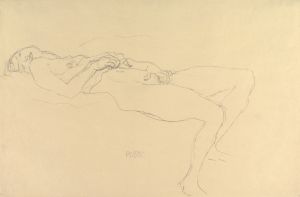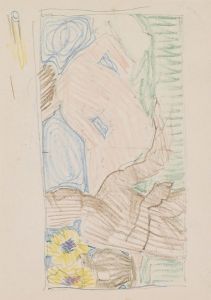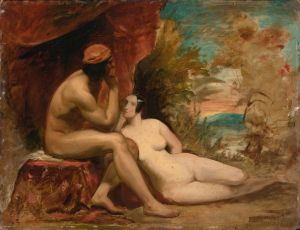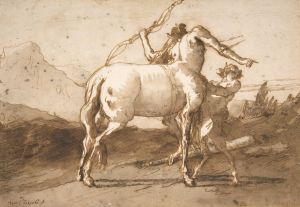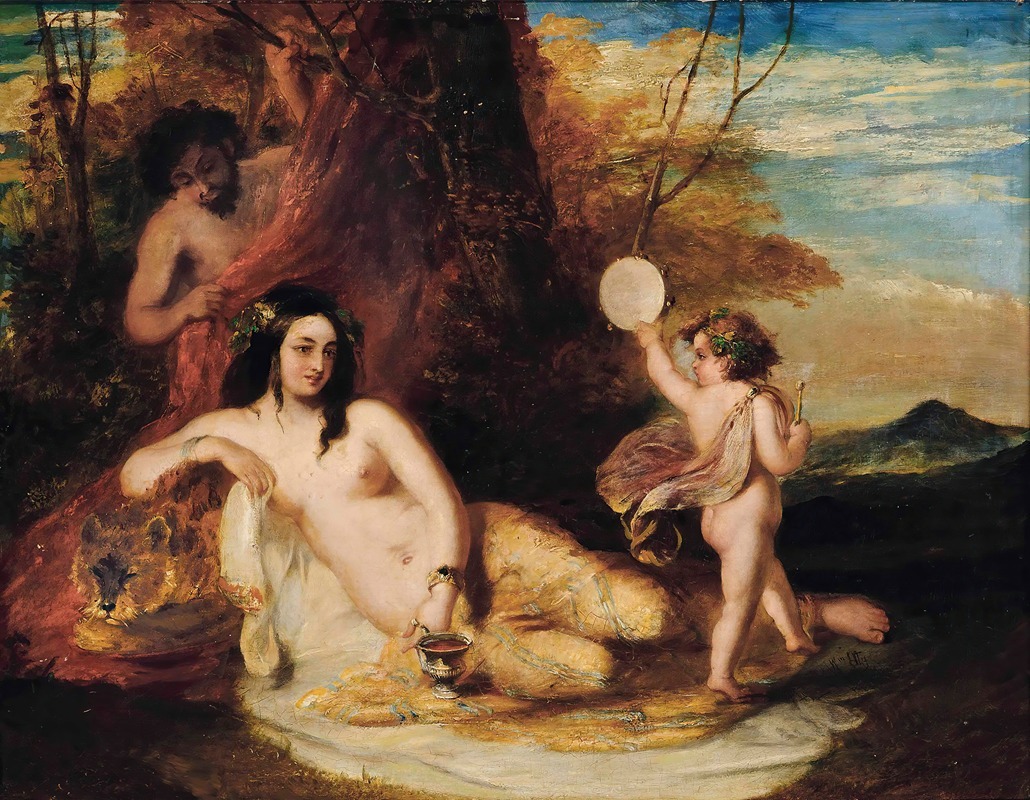
Satyr spying on a reclining nymph
A hand-painted replica of William Etty’s masterpiece Satyr spying on a reclining nymph, meticulously crafted by professional artists to capture the true essence of the original. Each piece is created with museum-quality canvas and rare mineral pigments, carefully painted by experienced artists with delicate brushstrokes and rich, layered colors to perfectly recreate the texture of the original artwork. Unlike machine-printed reproductions, this hand-painted version brings the painting to life, infused with the artist’s emotions and skill in every stroke. Whether for personal collection or home decoration, it instantly elevates the artistic atmosphere of any space.
"Satyr Spying on a Reclining Nymph" is a painting by the British artist William Etty, created in 1828. Etty, born in 1787 in York, England, was known for his depictions of nude figures, often drawing inspiration from classical mythology and literature. His works frequently explored themes of beauty, sensuality, and the human form, which were sometimes controversial during his time.
The painting "Satyr Spying on a Reclining Nymph" is an oil on canvas and measures approximately 88.9 cm by 76.2 cm (35 inches by 30 inches). It depicts a scene from classical mythology, featuring a satyr, a creature from Greek mythology that is part man and part goat, spying on a nymph, a minor female deity associated with nature. The nymph is shown reclining, seemingly unaware of the satyr's presence. The composition captures a moment of voyeurism and tension, characteristic of Etty's interest in the interplay between innocence and eroticism.
Etty's technique in this painting demonstrates his mastery of the human form and his ability to render flesh tones with a high degree of realism. The nymph's body is painted with soft, delicate brushstrokes, highlighting her serene and relaxed posture. In contrast, the satyr is depicted with more dynamic and vigorous strokes, emphasizing his animalistic and predatory nature. The use of light and shadow in the painting enhances the dramatic effect, drawing the viewer's eye to the nymph's luminous skin and the satyr's dark, lurking figure.
The painting was exhibited at the Royal Academy in London in 1828, where it received mixed reactions. While some praised Etty's technical skill and the beauty of his figures, others criticized the perceived indecency of his subject matter. Despite the controversy, Etty continued to produce works that challenged contemporary norms and pushed the boundaries of acceptable art in the 19th century.
"Satyr Spying on a Reclining Nymph" is now part of the collection at the Tate Britain in London. It remains an important example of Etty's work and a testament to his contribution to the Romantic movement in British art. The painting reflects the artist's fascination with classical themes and his commitment to exploring the complexities of human emotion and desire through his art.
Etty's legacy as an artist is marked by his dedication to the study of the human form and his willingness to confront societal taboos. His works, including "Satyr Spying on a Reclining Nymph," continue to be studied and appreciated for their technical excellence and their provocative subject matter.







